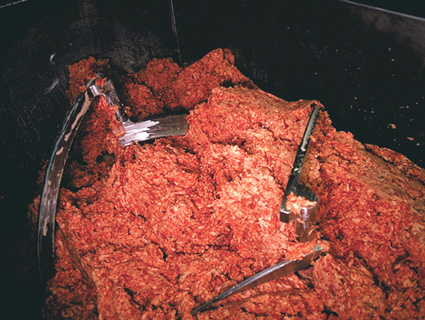
Shutterstock/<a href="http://www.shutterstock.com/pic-145947524/stock-photo-little-asian-girl-with-vegetables-food-isolated-over-white.html?src=+Qe8oqU6pAiPZbEAuGcYpQ-1-29" target="_blank">Patrick Foto</a>
From all of the commotion around the new federal school lunch standards, you’d think they were really Draconian. Republican legislators have railed against them. Districts have threatened to opt out. The School Nutrition Association (SNA), the industry group that represents the nation’s 55,000 school food employees, has officially opposed some of them—and doubled its lobbying in the months leading up to July 1, when some of the new rules took effect.
Here’s who doesn’t mind the new standards: kids. For a study just published in the peer-reviewed journal Childhood Obesity, researchers asked administrators and food service staff at 537 public elementary schools how their students were liking the meals that conformed to the new standards. Half of those surveyed said that the students “complained about the meals at first,” but 70 percent said that the students now like the new lunches. Rural districts were the least enthusiastic about the new meals—there, some respondents reported that purchasing was down and that students were eating less of their meals. But respondents from schools with a high percentage of poor students—those with at least two-thirds eligible for free or reduced-price meals—were especially positive about the new standards: They found that “more students were buying lunch and that students were eating more of the meal than in the previous year.”
“Kids who really need good nutrition most at school are getting it,” says Lindsey Turner, the Childhood Obesity study’s lead author and a research scientist at the University of Illinois-Chicago. “That’s really good news.”
SNA’s response? To issue a statement declaring that “these reported perceptions about school meals do not reflect reality.” The group cites USDA data that participation in school meals has declined by 1.4 million since the new rules went into effect in 2012. But Turner, the Childhood Obesity study’s lead author, notes that this is only about a 3 percent drop. She also points to a Government Accountability Office study that found that most of the drop-off was among students who pay full price for lunch.
What makes SNA’s stance on the new rules even stranger is that they actually are not all that strict. For example: Foods served must be whole grain rich, but as I learned from my trip to SNA’s annual conference last week, that includes whole-grain Pop Tarts, Cheetos, and Rice Krispies Treats. Students are required to take a half cup of a fruit or vegetable—but Italian ice—in flavors like Hip Hoppin’ Jelly Bean—are fair game.
Not all members of SNA consider the task of tempting kids with healthy foods onerous. As I reported last week, Jessica Shelly, food director of Cincinnati’s diverse public schools, has shown that all it takes is a little creativity.
HT The Lunch Tray.
















